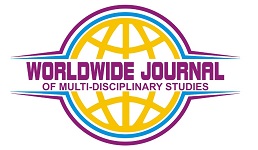Author: Dr. David Ackah, PhD.
Akamia University,
Community & Economic Department
Email: drackah@ipmp.edu.gh
Abstract
Since independence, the Government has addressed challenges facing the education sector through Commissions, Committees and Taskforces. The first Commission, after independence, came up with the Report of the Kenya Education Commission (The Ominde Report, 1964) that sought to reform the education system inherited from the colonial government to make it more responsive to the needs of independent Kenya. The Commission proposed an education system that would foster national unity and the creation of sufficient human capital for national development. Sessional Paper No: 10 of 1965 on African Socialism and its Application to Planning in Kenya, formally adopted the Ominde Report as a basis for post-independence educational development. The Report of the National Committee on Educational Objectives and Policies (The Gachathi Report, 1976), focused on redefining Kenya’s educational policies and objectives, giving consideration to national unity, and economic, social and cultural aspirations of the people of Kenya. It resulted in Government support for ‘Harambee’ schools and also led to establishment of the National Centre for Early Childhood Education (NACECE) at the KenyaInstitute of Education (KIE). The Report of the Presidential Working Party on the Second University in Kenya (The Mackay Report, 1981) led to the removal of the advanced (A) level of secondary education, and the expansion of other post-secondary training institutions. In addition to the establishment of Moi University, it also recommended the establishment of the 8:4:4 system of education and the Commission for Higher Education (CHE). The Report of the Presidential Working Party on Education and Manpower Training for the Next Decade and Beyond (The Kamunge Report, 1988) focused on improving education financing, quality and relevance. This was at a time when the Government scheme for the provision of instructional materials through the National Textbook Scheme was inefficient and therefore adversely affected the quality of teaching and learning. From there commendations of the Working Party in 1988, the Government produced Sessional Paper No 6 on Education and Training for the Next Decade and Beyond. This led to the policy of cost sharing between government, parents and communities. The Commission of Inquiry into the Education System of Kenya (The Koech Report, 2000) was mandated to recommend ways and means of enabling the education system to facilitate national unity, mutual social responsibility, Accelerated industrial and technological development, life-long learning, and adaptation in response to changing circumstances. The Koech Report recommended Totally Integrated Quality Education and Training (TIQET).While the Government did not adopt the Report due to the cost implications some recommendations such as curriculum rationalization have been adopted and implemented. Such as curriculum rationalization have been adopted and implemented. Rationalization have been adopted and implemented.
Keywords: Education Policies, Education System, Curriculum Rationalization

